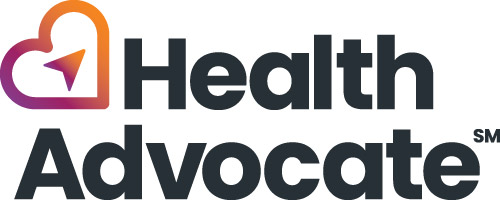
The balancing act: Integrating high-tech with hightouch to benefit patient health
Colin Roberts and Raffi Terzian
HIT Leaders & News | November 2, 2016
There is no denying that technology is transforming the healthcare experience. However, better patient outcomes are still reliant on strong patient engagement. Further, people have various needs and preferences when it comes to how they want to approach and manage their health. A one-size-fits-all engagement strategy is no longer effective to motivate people to take action to improve their health.
Additionally, reaching the maximum number of patients through consistent patient communication across the continuum of care is key to closing gaps in care. Yet, many healthcare organizations do not have the tools and processes in place to align patient member communication with clinical workflows or care plans. As a result, engagement is often disjointed, reactive and inefficient. For example, periodic outreach phone calls are too easily missed.
However, organizations can meet the varied needs of patients and improve outreach by harnessing the power of technology like automated phone calls, texts, emails and online portals, and blending it with personalized communication. Both technology and live support resources offer their own mix of benefits and costs for organizations, but when implemented appropriately, they can be very successful together. Finding the right balance can benefit organizations, driving patient engagement and optimizing healthcare outcomes.
Leveraging existing and emerging technology
Technology is constantly evolving, and both existing and emerging solutions can play an important role in complementing and amplifying healthcare initiatives. By strategically layering these resources into outreach and communications, it’s possible to increase engagement and help patients take the next step to improve their health. Two strategies currently gaining ground include automation and personalization.
Automation
Healthcare communication and management strategies and tactics vary from organization to organization, but each deals with the challenges of reducing costs while accommodating the varying needs of a growing patient population. The strategic use of automation technology based on where patients are on the spectrum of risk allows organizations to put a “human touch” where it is most needed: in areas relating to chronic care and transition care management; and provide customer-friendly, intelligent automation for patients who require more basic services, like routine care management.
Data-driven, automated outreach allows for broader, more consistent engagement across the care continuum and can be delivered more cost-effectively, while also allowing for care managers to personally assist patients with more complex needs. Further, this approach ensures communications reach the right patient, at the right time, and in their channel of choice.
Personalization
The combination of data and technology has enabled healthcare communications to become personalized, meeting both the needs and preferences of users. This approach can be a key component in increasing patient engagement. Patients can select their communication channel of choice, including phone, text, email, web or medical device. Through this channel, specific interventions can be delivered to remind them about upcoming appointments or medication refills, encourage them to contact a coach for assistance and more, all complementing other forms of outreach to ensure patients get the care they need, when they need it.
Integrating technology into existing programs
Automation and personalization work most effectively when applied in tandem and integrated with other methods of patient support. In order to be most successful, a great starting point is to look at where these types of technologies can be introduced into existing patient engagement programs.
Technology can support and amplify health communications in a myriad of ways, so it is important to look at how the technology can assist in driving efficiencies in order to be strategic in how this is added to current processes. One way in doing this is to leverage technology in places where people are currently being used to provide support and services. In today’s world of healthcare, people are being used to administer all facets of care along the cost/risk curve. Thankfully, with today’s technology, even automated processes can be highly personalized—both in message (i.e., specific to the individual patient) and the mode of communication (i.e., the patient’s preferred communication channel: phone call, text, email, etc.).
As we move down the cost/risk curve, there is greater application of technology to support patients. For example, on one side of this curve we have the customer care call center, and on the other side we may have the clinical staff. In the middle are varying degrees of technology applications, and it’s those organizations who get this mix right who will be best positioned to drive costs out of their model.
Many organizations are challenged with meeting the increasingly complex healthcare needs of their population while reducing costs. Incorporating cutting edge technology based on where patients are on the spectrum of risk allows your organization to put a “human touch” where it is most needed, offering valuable personalized healthcare support to help improve outcomes while managing rising costs.
Creating the right balance
Integrating technology with personalized support has the capability to help patients more effectively manage their health, but how can organizations determine the appropriate balance that fits the unique needs of their population? There are a number of strategies to consider:
- Leverage data analytics. As mentioned, depending on where patients are on the spectrum of risk, they may require different levels of technology access/ outreach and high touch support. But by analyzing data, including claims, surveys, screening results, and more, it’s possible to identify specific patient needs and offer resources to meet them. For example, someone on the low risk end of the spectrum may benefit from automated appointment reminders sent via text messages. But for someone with a chronic condition who requires more advanced care, a phone call from a nurse or other clinician to answer questions, ensure they are taking their medications as needed, and help schedule follow-up appointments could make a big difference in adherence and outcomes.
- Offer options. Since patients have a wide range of needs and preferences, it is critical to provide them with a variety of different channels available to access information about their health. This can include some of those already discussed and more, such as phone calls, text, email, mobile apps, website or online platforms, and home device monitoring.
- Personalize outreach. In addition to using data to identify patient needs, this can also be used to personalize communications and target information based on individual patient’s health. For example, if data indicates a regular prescription has not been refilled recently, a text or email reminder can be sent to prompt the patient to pick up their medication.
As an example of how this approach can be put into practice, consider the case of a 63-year-old patient with diabetes. He has access to a care manager who is able to help him enroll in a diabetes care management program and leverage some of the technologies previously mentioned to keep him engaged in his health and prevent further gaps in care.
His care manager sets up simple text reminders about upcoming appointments, reminder calls to collect blood sugar readings, surveys about how he’s doing with medications, and an email to get an annual flu vaccine. If his survey reveals he is not taking medications as recommended or a remote monitoring device for glucose levels indicates any cause for concern, the case manager can personally reach out to guide him, providing multi-faceted support to keep him on the right path toward better health.
This is just one example of how integrating technology and personalized support can benefit patient health. By finding the right balance of technology and high-touch support, it’s possible to drive patient engagement and improve outcomes while managing rising costs.

